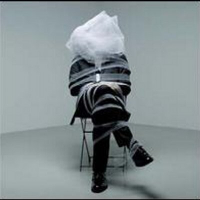Crank Lengths
Comments
-
I'm going to take a guess and say no.
Crank length is related to size of the rider and you would almost be excluding exceptionally tall riders if you put in a maximum. Would be similar to regulating frame size.
A pro would tend to use a longer crank than a mere mortal (other than for the fact 'we' like using the stuff 'they' use - but even for them, there becomes a point were no further benefit is realised.0 -
I think not, though if you take it to extremes there is a BB height limit, which at 300mm is a bit higher than most road bikes so you can probably go to 200mm or so before you can't get round sharp corners!0
-
tremayne wrote:A pro would tend to use a longer crank than a mere mortal (other than for the fact 'we' like using the stuff 'they' use - but even for them, there becomes a point were no further benefit is realised.
I don't think pros use longer cranks for their height than anyone else, their biomechanics measure up just like everyone else.0 -
The reason for my thoughts along those lines were connected to the probability a pro is likely to be more 'bendy' than a mortal. Along the lines that a longer crank by its very nature is going to come further up (ie your leg is having to bend more and fold more to accomodate) - and if you are already bent forwards, an extra length crank probably isn't going to be too comfy. Given that your saddle will be set correct for the pedal at the bottom of the downstroke (whatever crank length) - one of the net effects of a longer crank is that the pedal comes further up.
Just thoughts - no proven fact!0 -
tremayne wrote:The reason for my thoughts along those lines were connected to the probability a pro is likely to be more 'bendy' than a mortal. Along the lines that a longer crank by its very nature is going to come further up (ie your leg is having to bend more and fold more to accomodate) - and if you are already bent forwards, an extra length crank probably isn't going to be too comfy. Given that your saddle will be set correct for the pedal at the bottom of the downstroke (whatever crank length) - one of the net effects of a longer crank is that the pedal comes further up.
Just thoughts - no proven fact!
Flawed logic though - as you state that the crank 'by its very nature' is going to come further up, and that a pro is more 'bendy', how do you explain the crank going further 'down'... Does the pro rider have stretchy bones?0 -
OK I may be missing something but wouldn't you just adjust your saddle height to reach further down - so stretchy bones not needed - but you would need to have some degree of flexibility to accommodate the longer crank at the top of the rotation.
it's a hard life if you don't weaken.0 -
:shock: :roll:


Muppetry of the first order0 -
I like the idea of stretchy bones and really long crank arms0
-
nweststeyn wrote:tremayne wrote:The reason for my thoughts along those lines were connected to the probability a pro is likely to be more 'bendy' than a mortal. Along the lines that a longer crank by its very nature is going to come further up (ie your leg is having to bend more and fold more to accomodate) - and if you are already bent forwards, an extra length crank probably isn't going to be too comfy. Given that your saddle will be set correct for the pedal at the bottom of the downstroke (whatever crank length) - one of the net effects of a longer crank is that the pedal comes further up.
Just thoughts - no proven fact!
Flawed logic though - as you state that the crank 'by its very nature' is going to come further up, and that a pro is more 'bendy', how do you explain the crank going further 'down'... Does the pro rider have stretchy bones?
Perhaps I'm not trying hard enough to explain. Ok here goes!
You are sat on your bike and your right foot is on the pedal and that pedal is fully 'down'. Irrespective of whether you have 160, 165, 170, 175 or muthahusive 195 cranks, at this point your leg will be roughly in the same position. Not locked out but fairly extended. No argument so far.
It's when that crank spins round to top dead centre that he have a possible issue with a super length crank. As stated already, your foot will that much higher and your leg that much more bent.0 -
I was in the thinking that greater torque came from longer cranks??
I remember Indurain having longer cranks. He also had the supplesse and power to push them around.
I think some riders use it like a badge of honour like having a 56 tooth Chainring on thier TT bikes.
I read that exaggerated crank Lengths are a bit of myth for going faster.
Hell, what do I know, I was always cr@p at TT'ing, climbing or any riding what so ever.
Also, I let Bio Racer sort all that out years ago and they told me what lengths crank I should have. Sometimes it's good to be a dumb cyclist.
-Jerry“Life is like riding a bicycle. To keep your balance you must keep moving”- Albert Einstein
"You can't ride the Tour de France on mineral water."
-Jacques Anquetil0 -
Merckx sometimes rode with mismatched cranks. But he was a bit of a nutter for that sort of thing.Warning No formatter is installed for the format0
-
-
I was reading a blog where it was thought Wiggins was using massive cranks during the Olympic TT, the writer was implying they might have been outside the regs. I agree that physique dictates what you can ride with, I cant imagine the IOC/UCI limiting that?0
-
Just had a further thought about effect of switching to longer cranks.
If someone swapped out a pair of 165 cranks and went to 195's, to achieve the same leg extension the saddle would need to be dropped by 30mm (or the bottom bracket raised by 30mm - but this cant be done with an allen key!). At top dead centre, the pedal would naturally be 30mm higher - however, this affect is further increased by the 30mm that the saddle has been dropped by.
ie - the net result of switching from 165 to 195 lengths is the pedal ending up 60mm closer to the riders body. I accept its an extreme example - but its suprising how much a difference it makes.0 -
Exactly - you are sat lower and your leg is going to be coming up higher - in effect that's going to narrow the angle at the hip isn't it. 5mm here or there isn't going to make a massive difference but it's going to make some difference.
it's a hard life if you don't weaken.0 -
That can make knee problems.Tom Butcher wrote:Exactly - you are sat lower and your leg is going to be coming up higher
When dwelling on saddle position, don’t forget a longer crank will mean the saddle should really be a bit farther forward for correct positioning of the knee above the forward pedal, when the pedals are horizontal. Could make things even worse for the knee.
A rule of thumb I’ve heard is ‘shorter crank for flatter land (when a high cadence is wanted), longer crank for hilly land’. I think this is the reason why the crank on a mountain bike is typically 0.5 mm longer than the crank on a racing bike (both bikes sized for the same person).0 -
knedlicky wrote:
That can make knee problems.Tom Butcher wrote:Exactly - you are sat lower and your leg is going to be coming up higher
When dwelling on saddle position, don’t forget a longer crank will mean the saddle should really be a bit farther forward for correct positioning of the knee above the forward pedal, when the pedals are horizontal. Could make things even worse for the knee.
First post on Pro Race... I have just switched to some longer 180 mm cranks on my Orbea, and I quickly found I was getting sore hips on longer rides, especially when in the drops. Moving my seat forward helped A LOT, but also meant I have a more upright seated position when not on the drops to keep my knee positioning correct.
I also had to move my stem up slightly to compensate. I suppose you have to make sacrifices which ever way you go!
So far, knee's aren't fairing too badly I am pleased to report."A beaten path is for beaten men"0 -
-
Remember a few years back Boonen did his early season on alloy cranks because campag didn't have a mold to make 180mm carbon cranks."In many ways, my story was that of a raging, Christ-like figure who hauled himself off the cross, looked up at the Romans with blood in his eyes and said 'My turn, sock cookers'"
@gietvangent0 -
disgruntledgoat wrote:Remember a few years back Boonen did his early season on alloy cranks because campag didn't have a mold to make 180mm carbon cranks.
:shock: Imagine the speed/pain required to get on top of 53x11 with those0 -
No, you look sh1t on a bike because of that sack on your head.Rick Chasey wrote:S'why short riders always look sh!t on the bike.
《《Case in point.
Oh, and your dress sense....0 -
0
-
shorter = better? Surely its also about chainset and cassette size too?0
-
Vino'sGhost wrote::shock: :roll:


Muppetry of the first order
Muppets, being what they are, do tend to be exceptionally bendy.0




